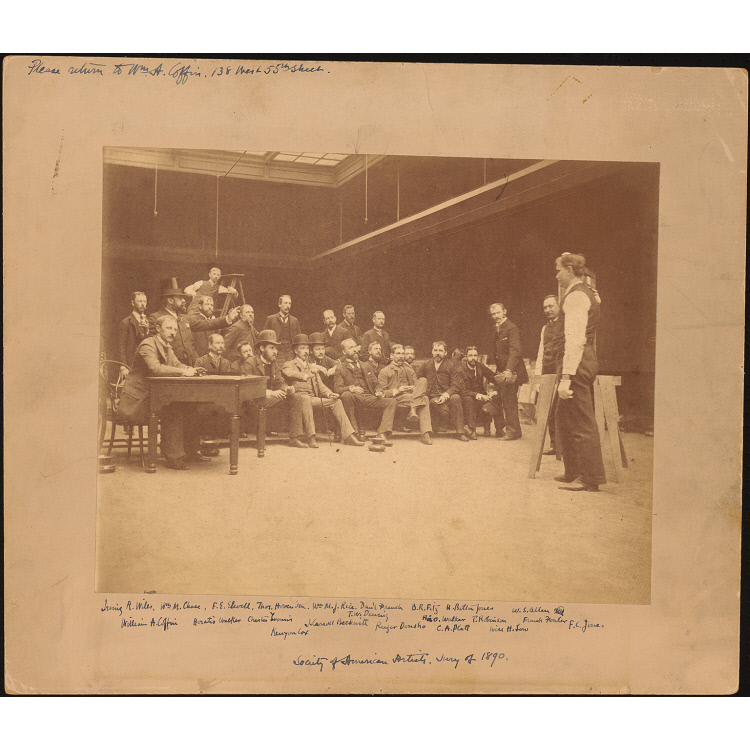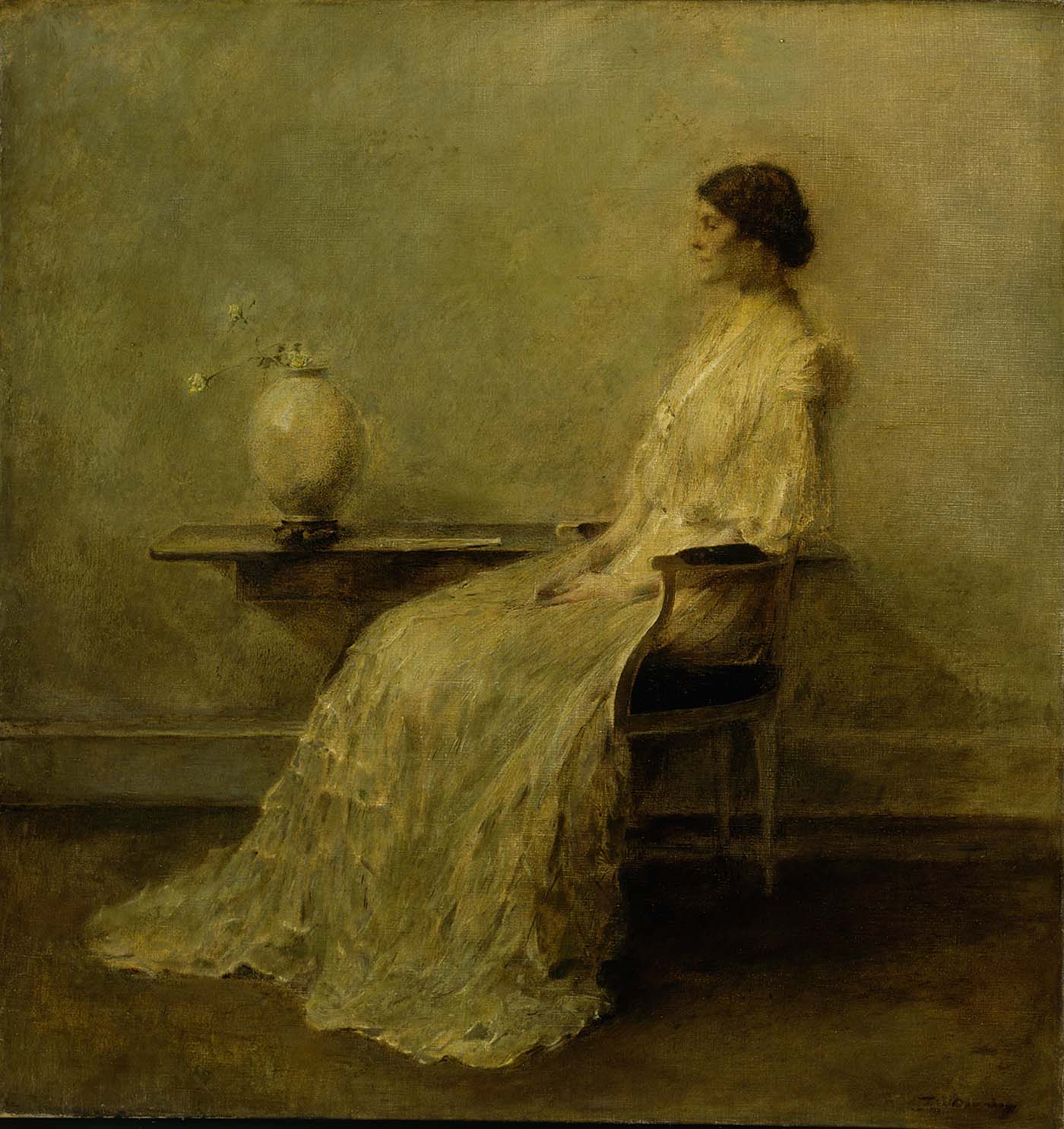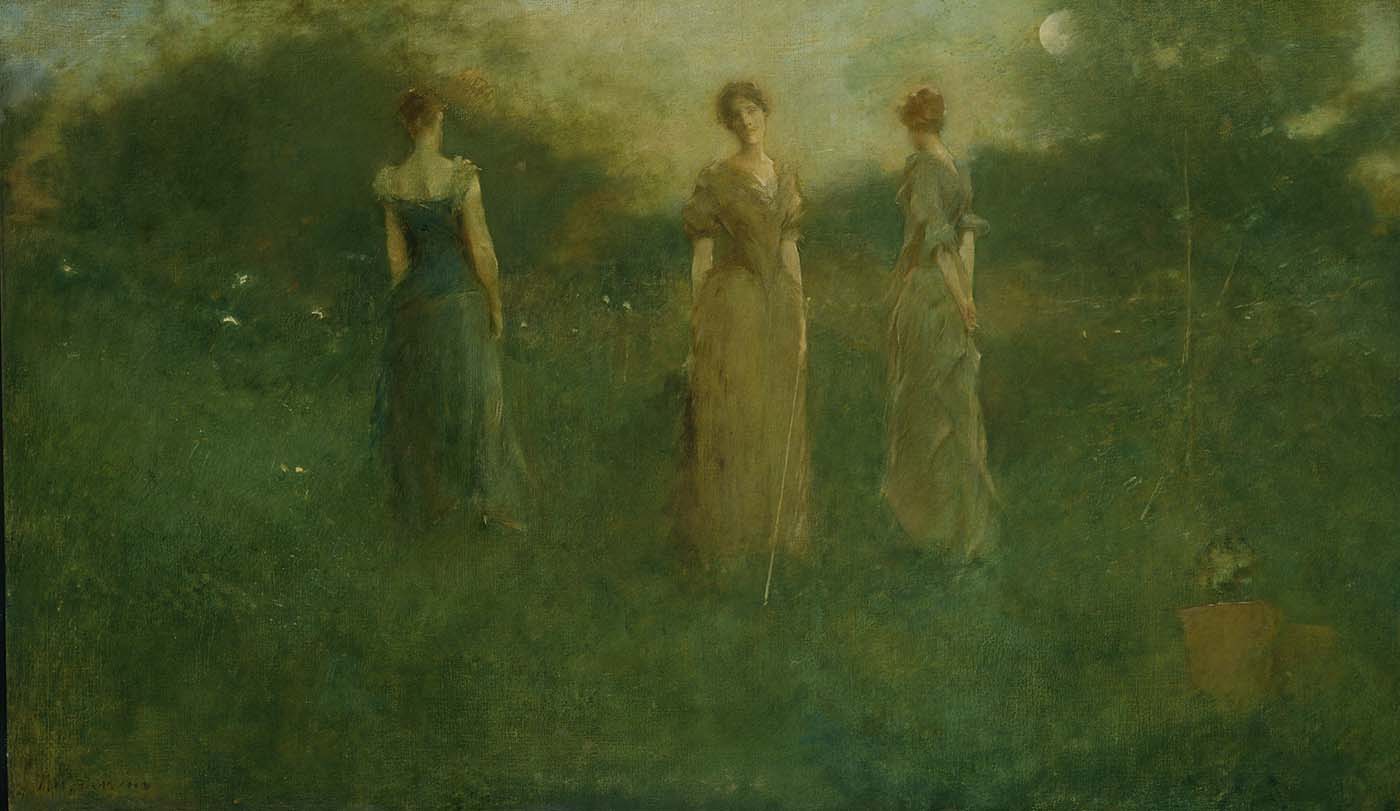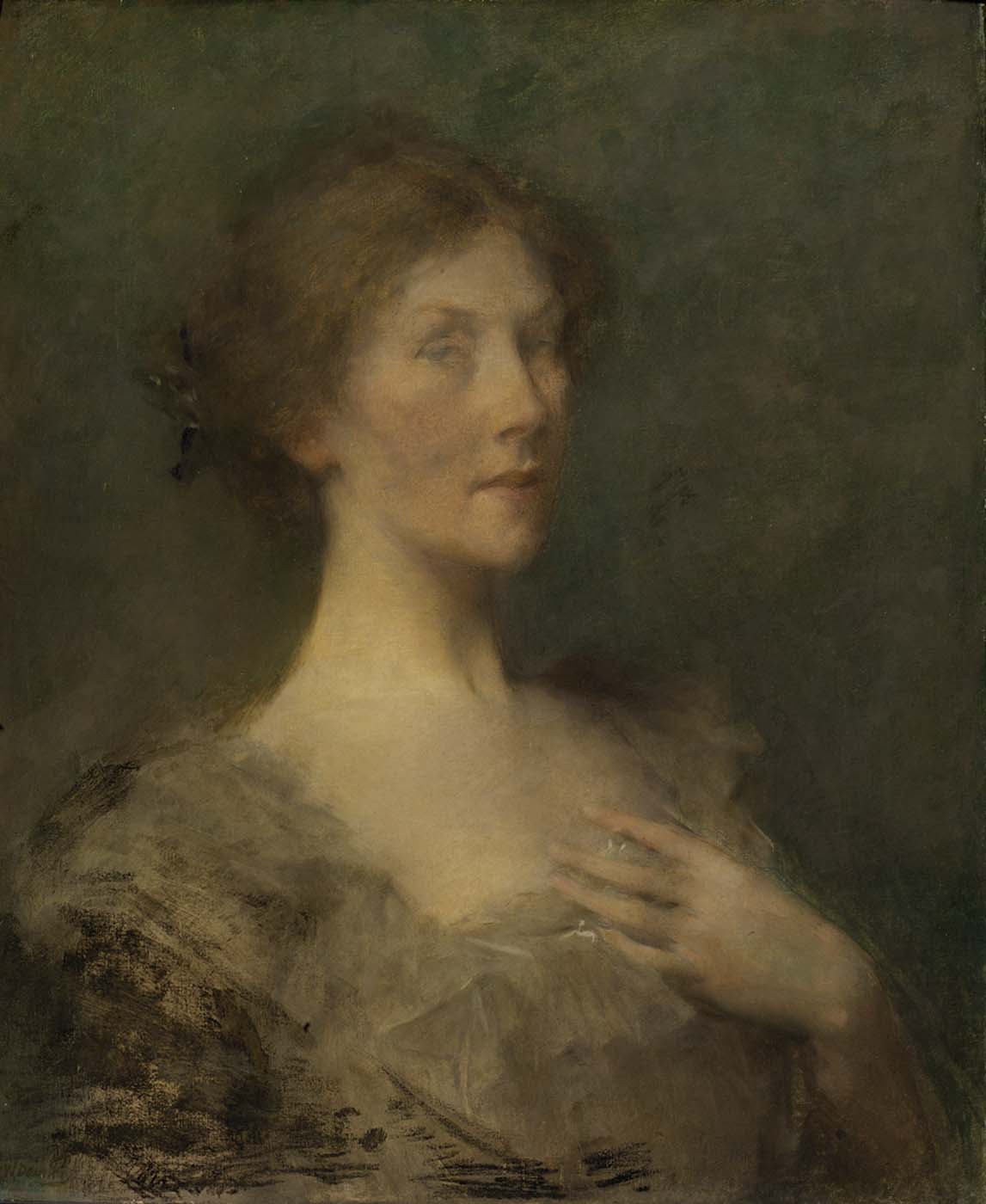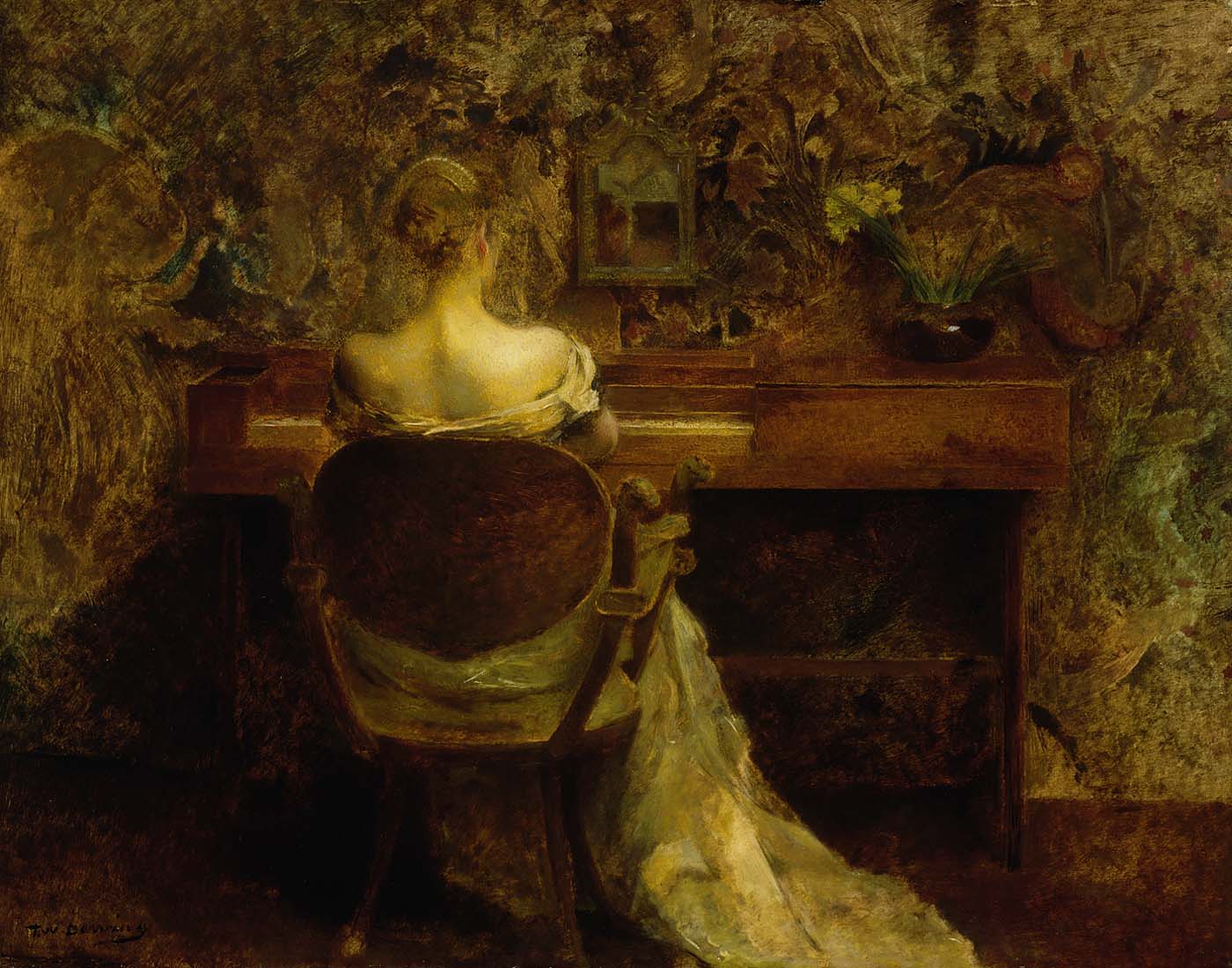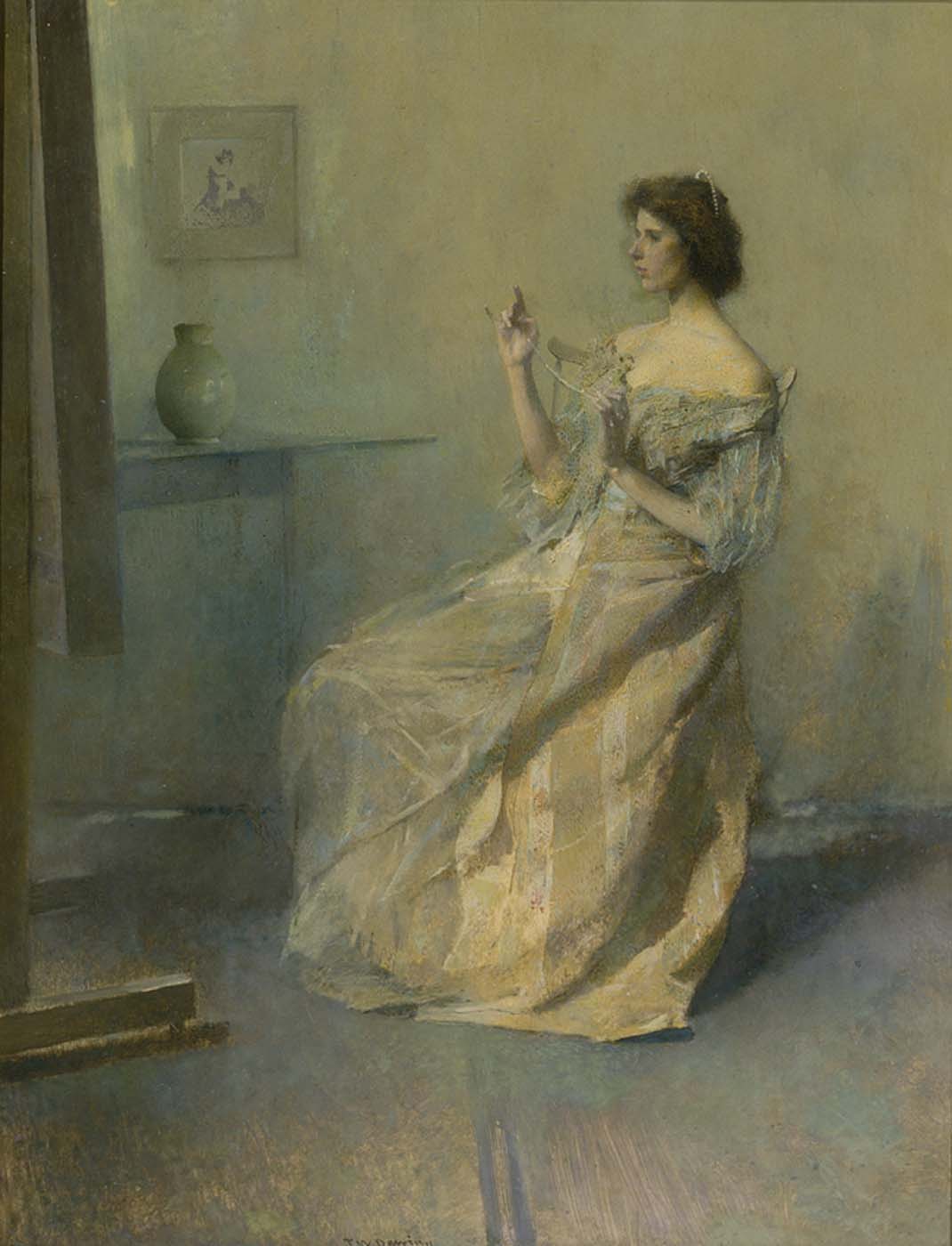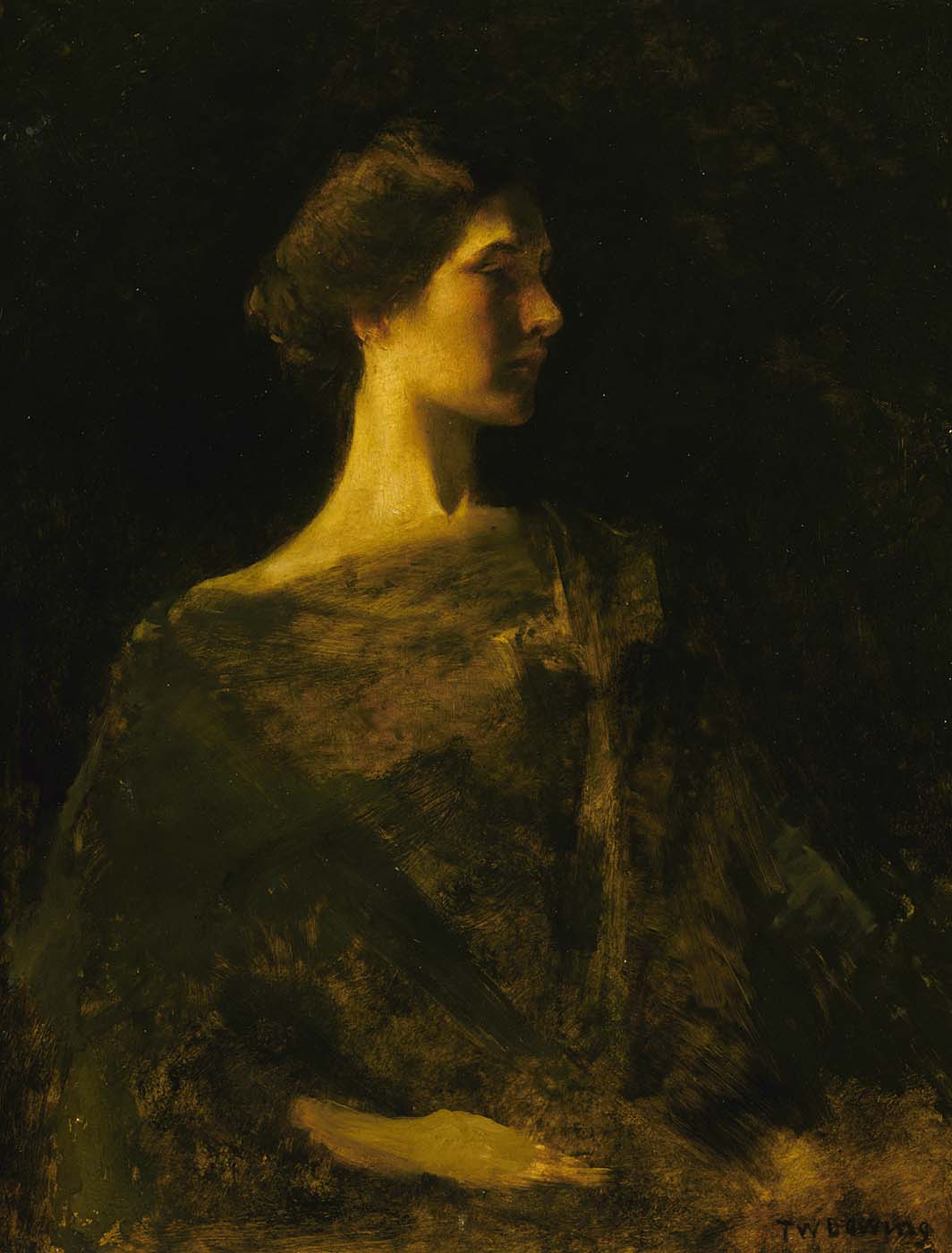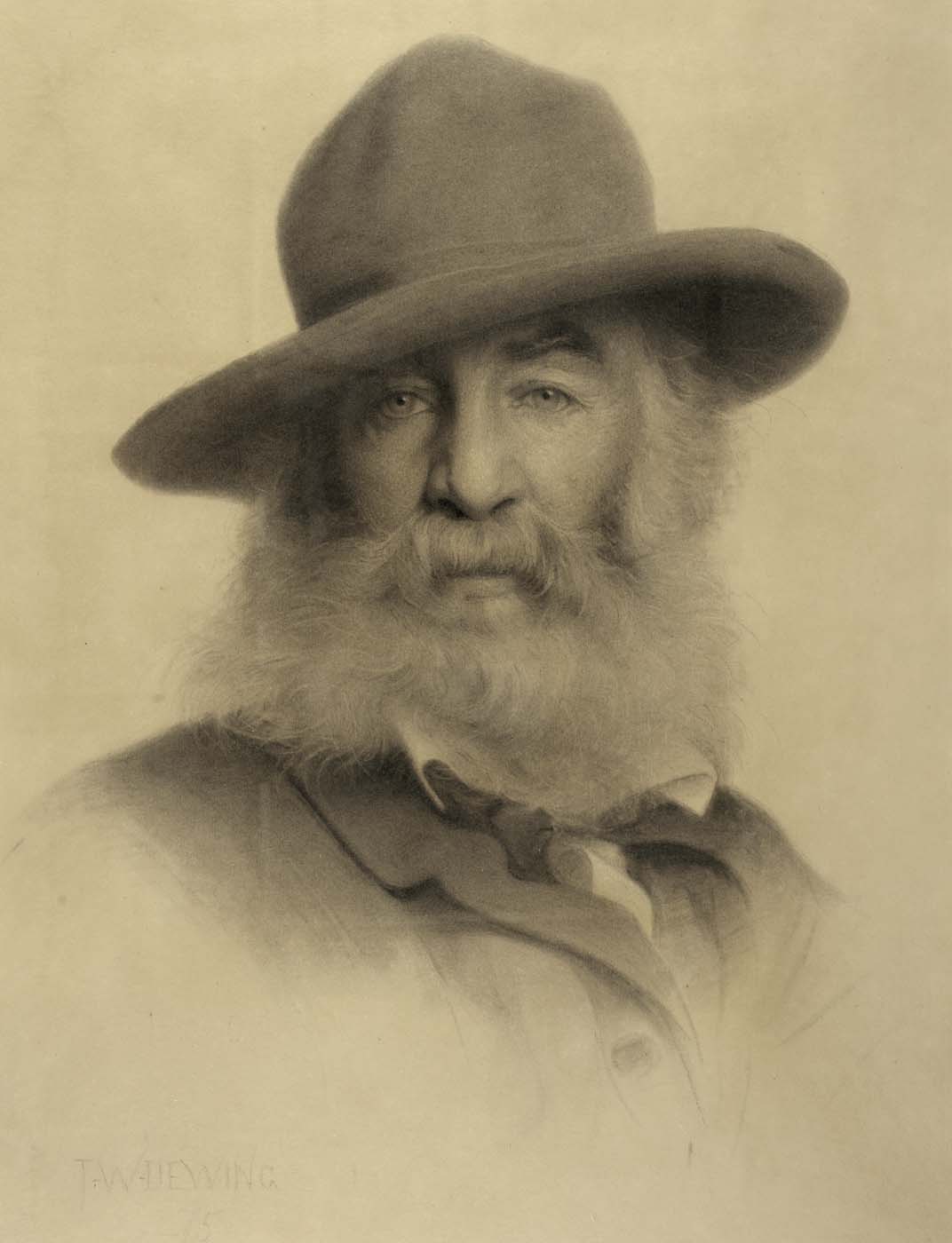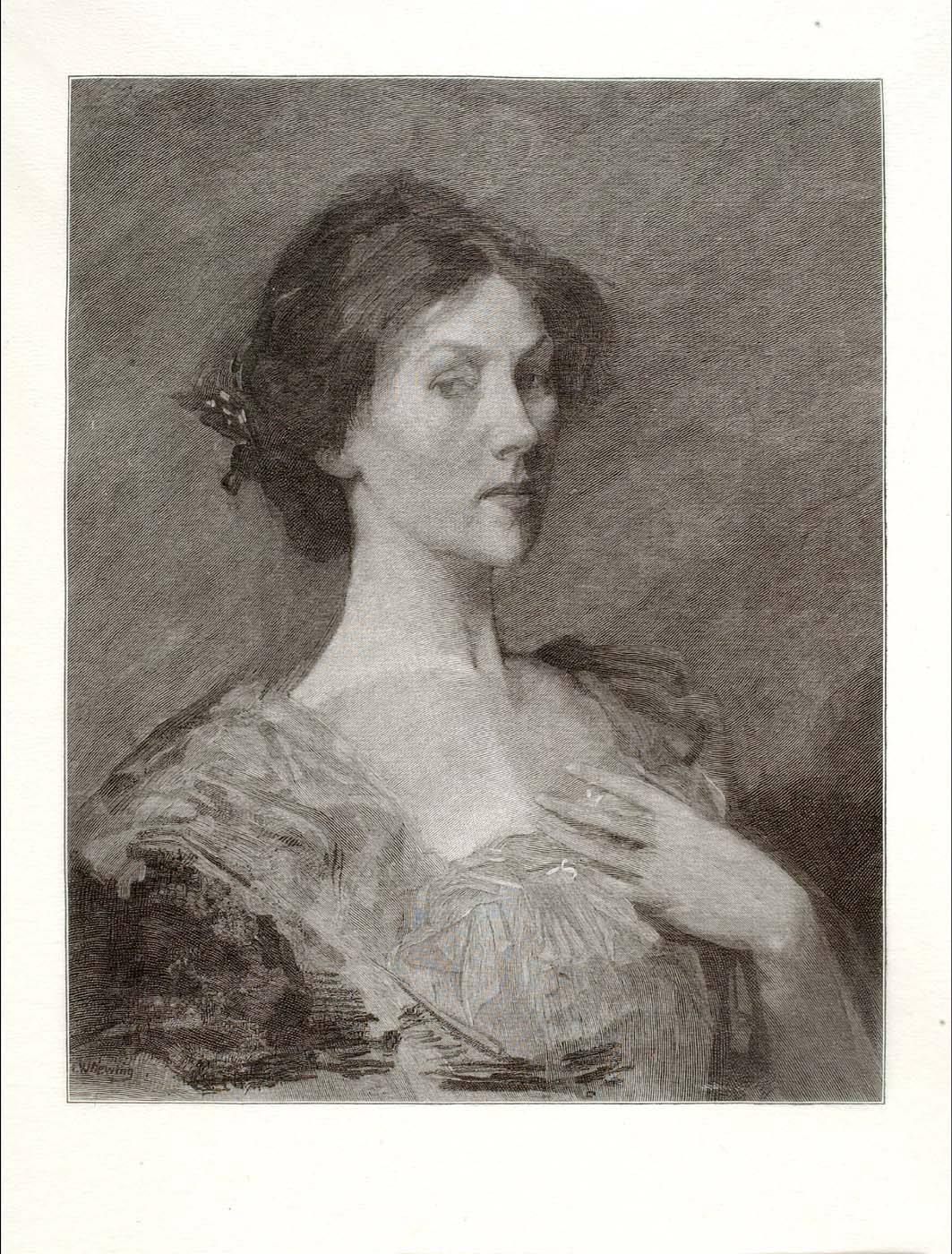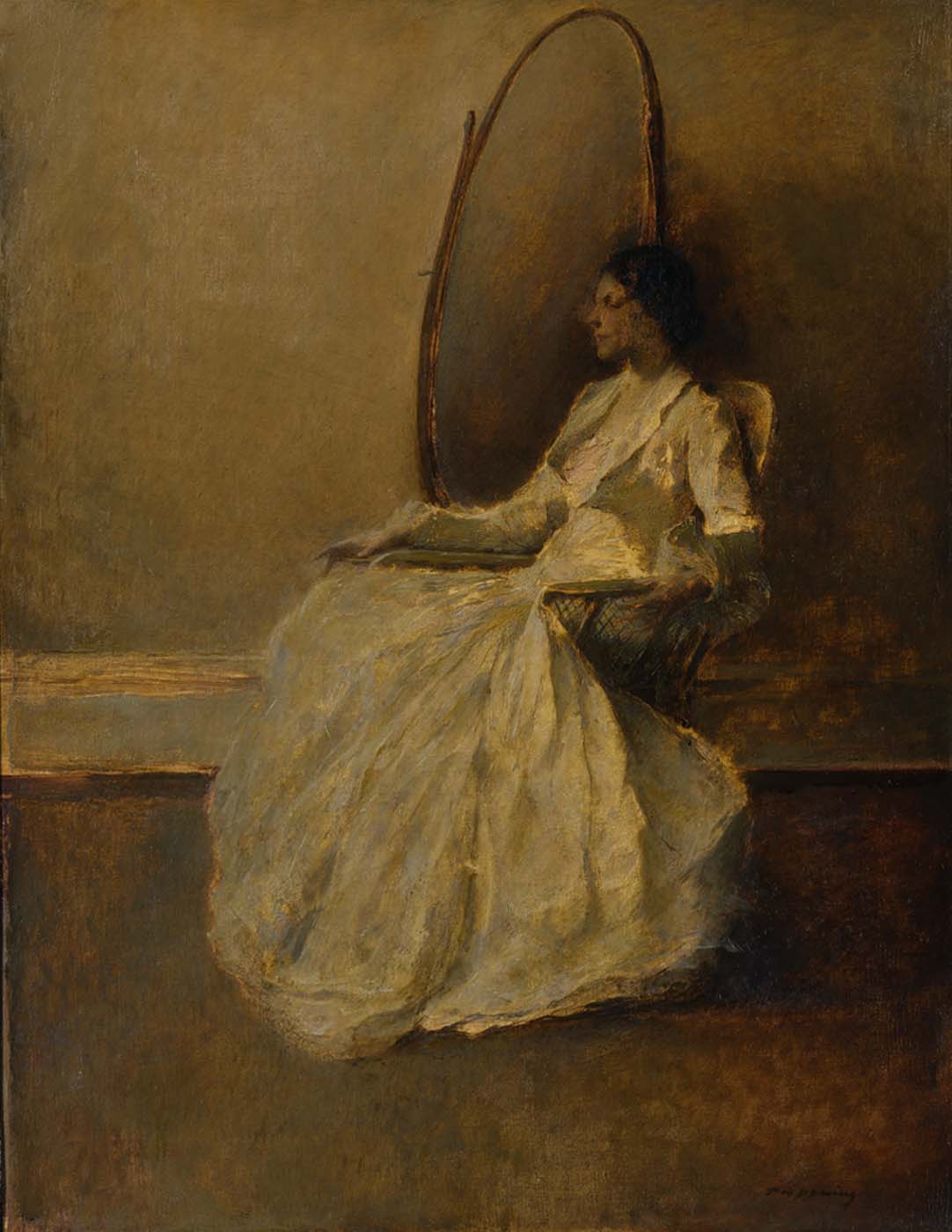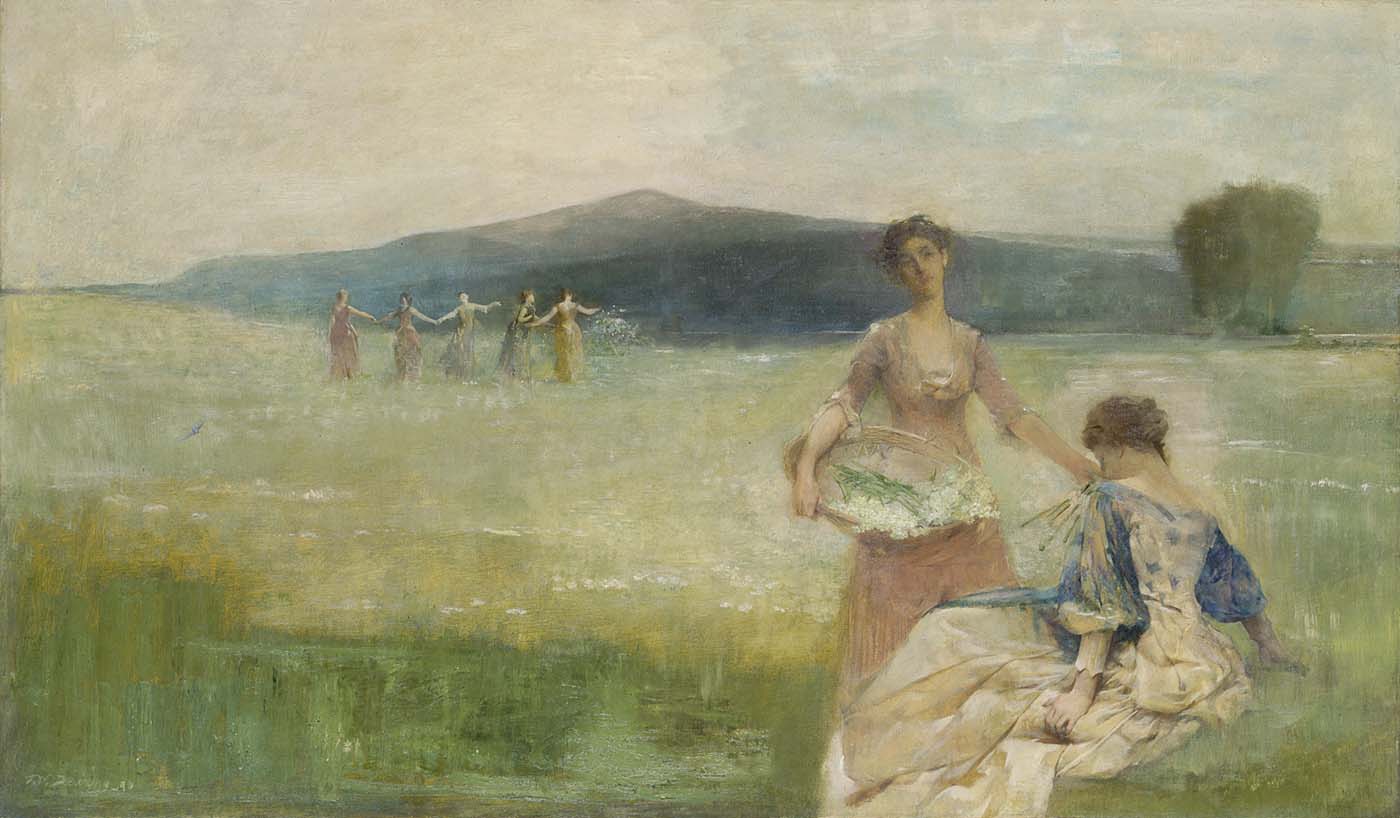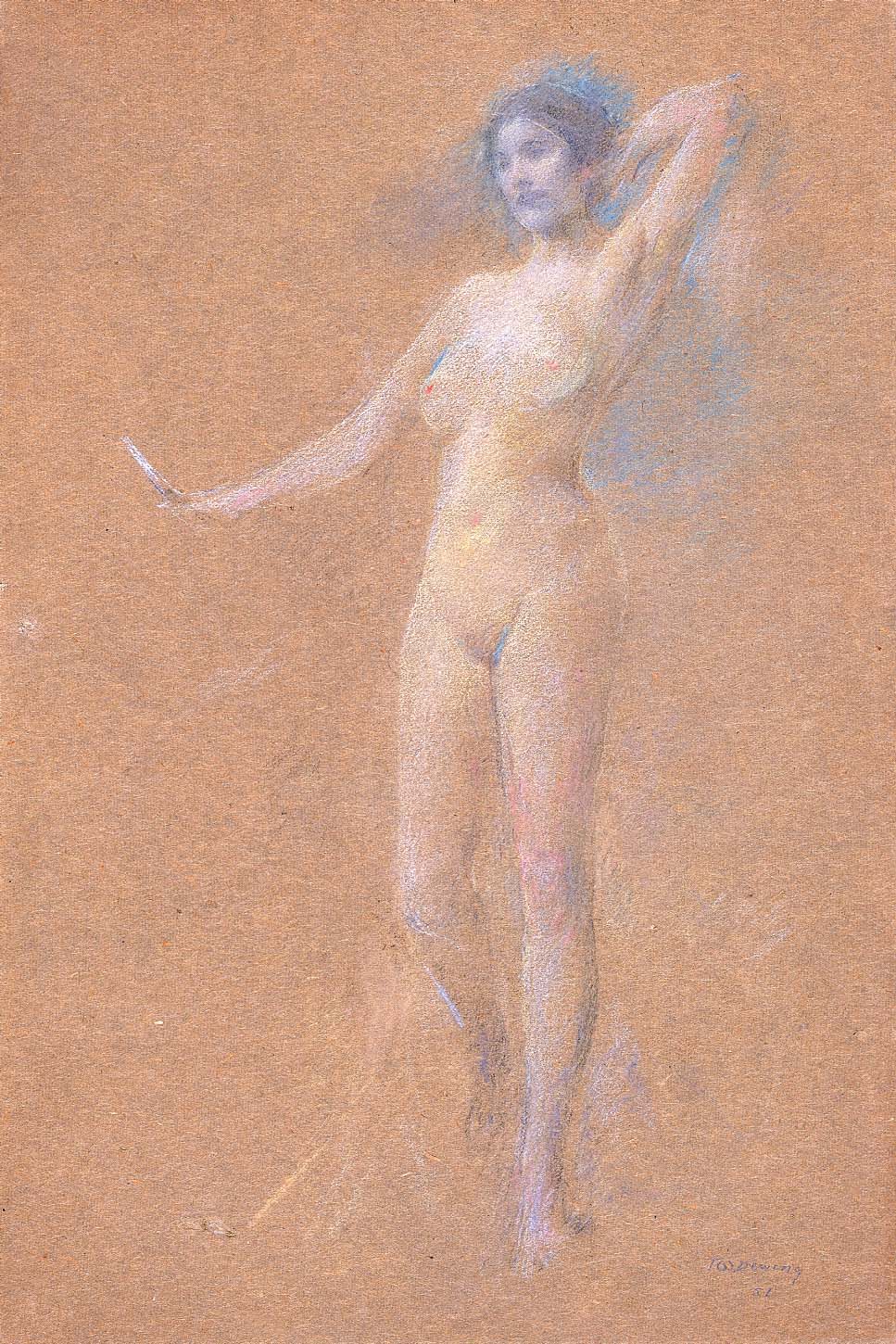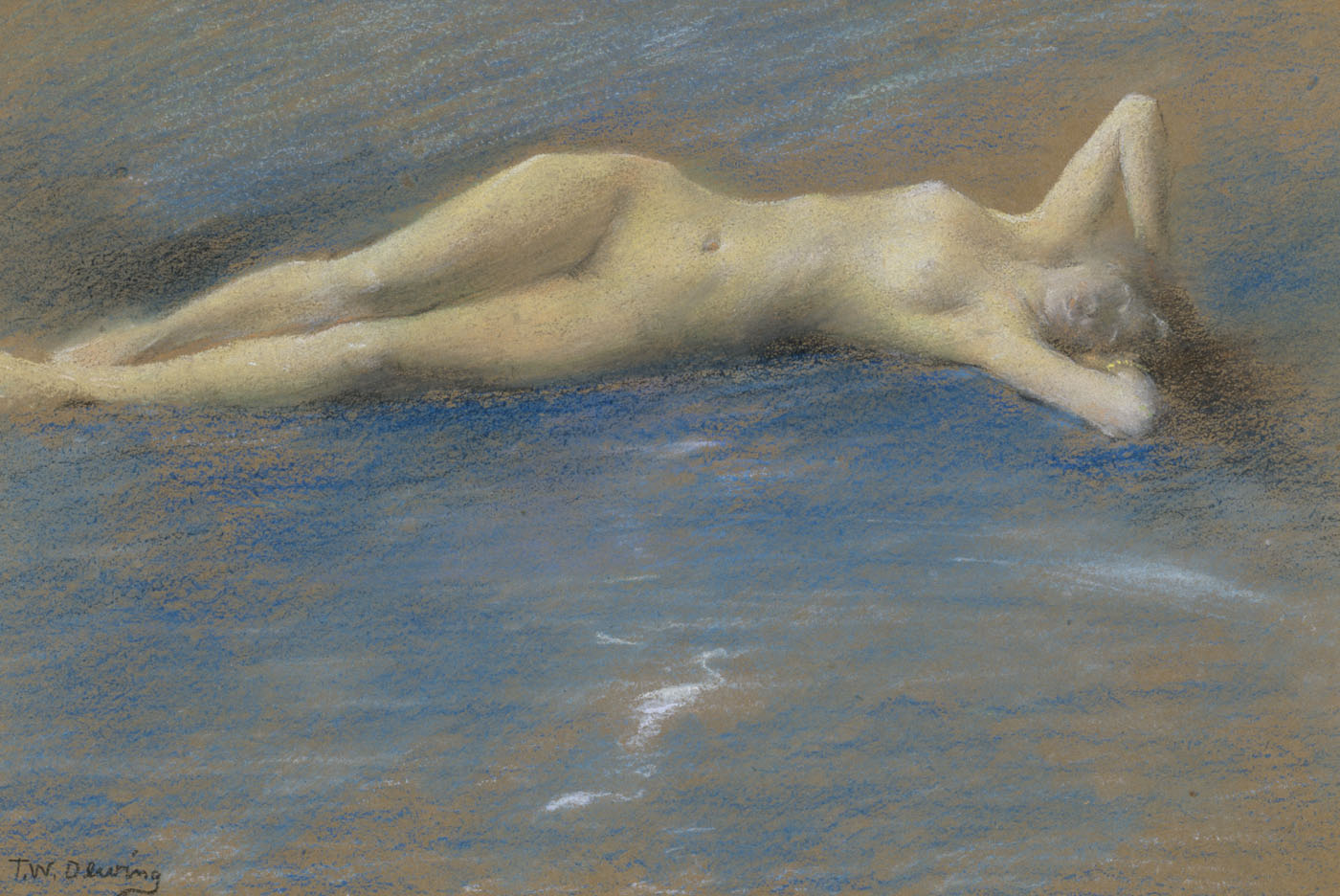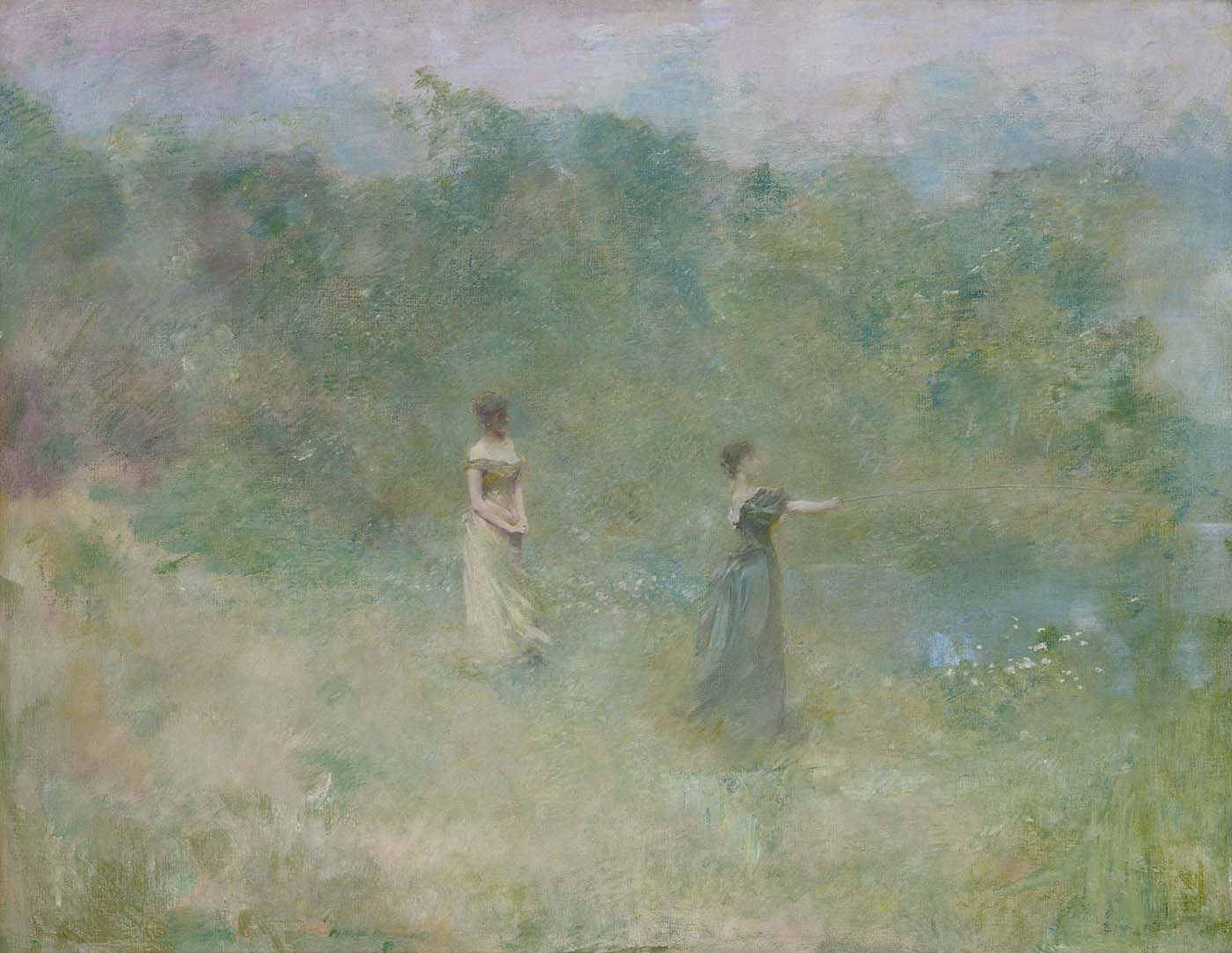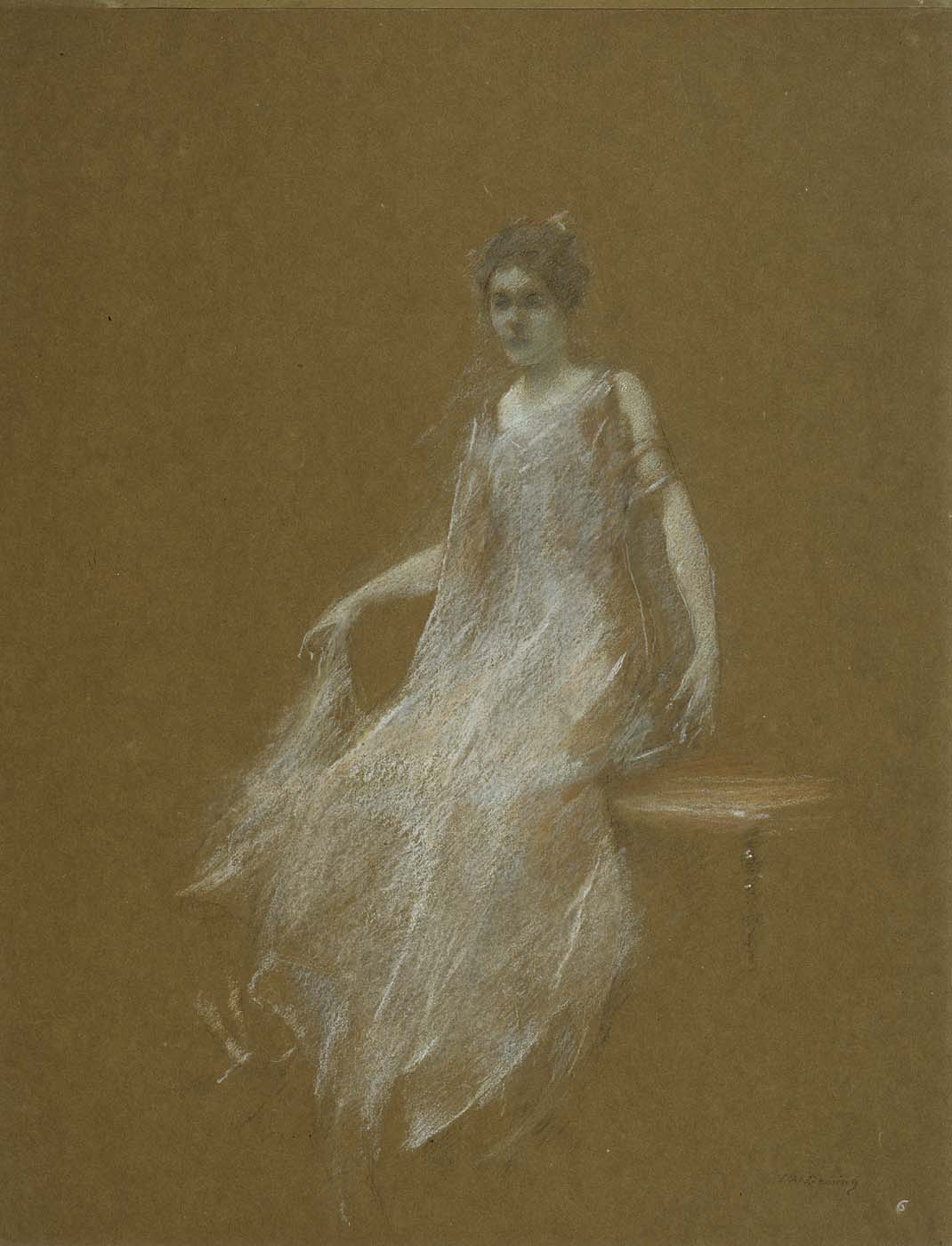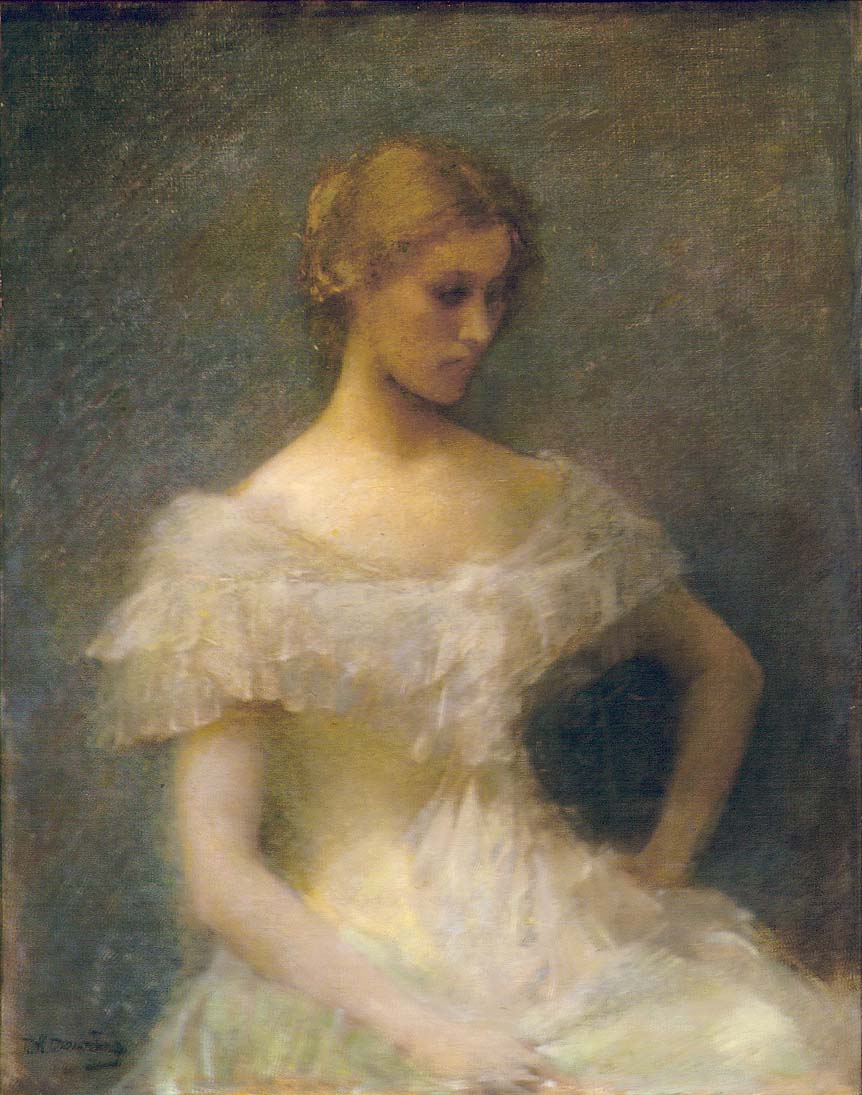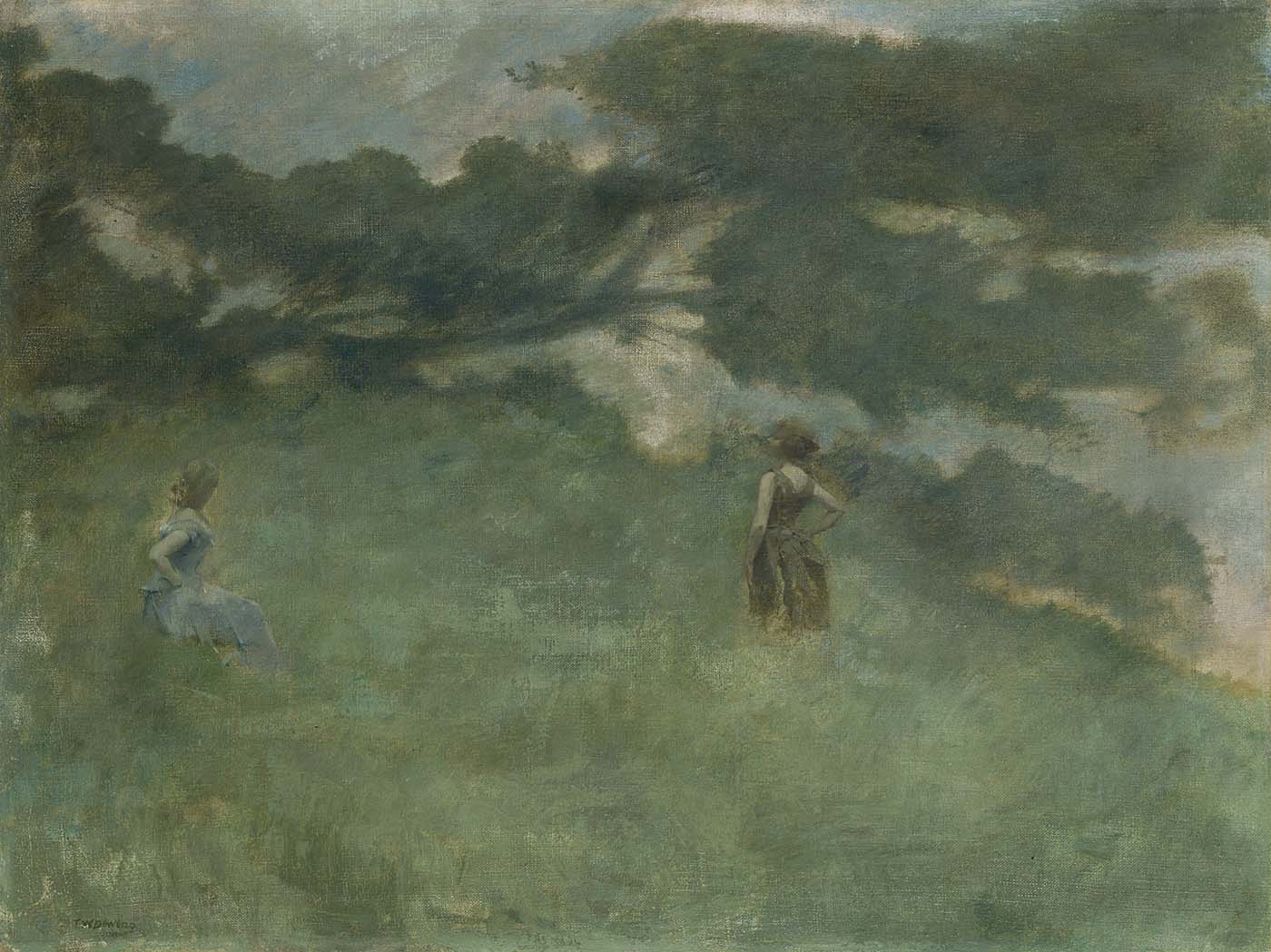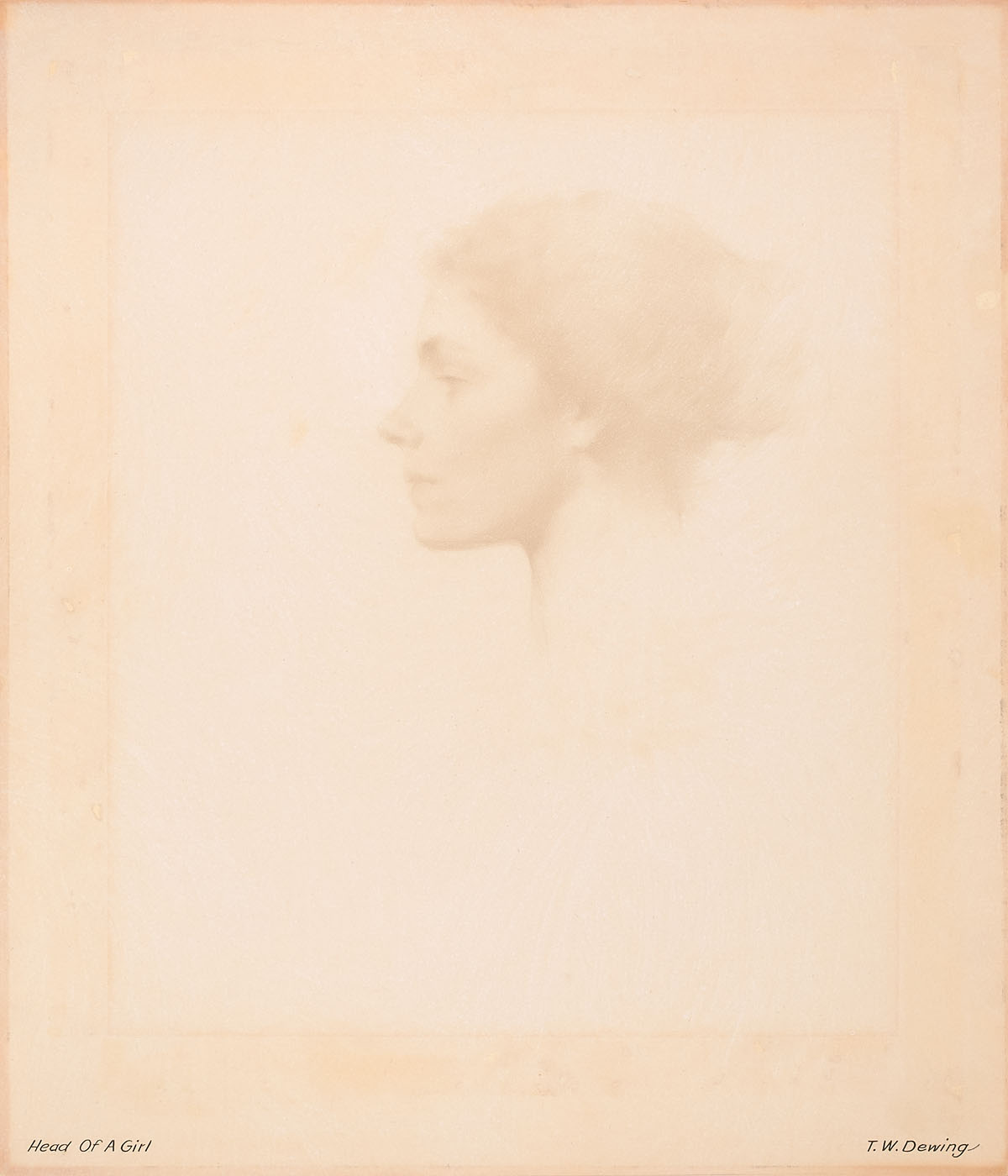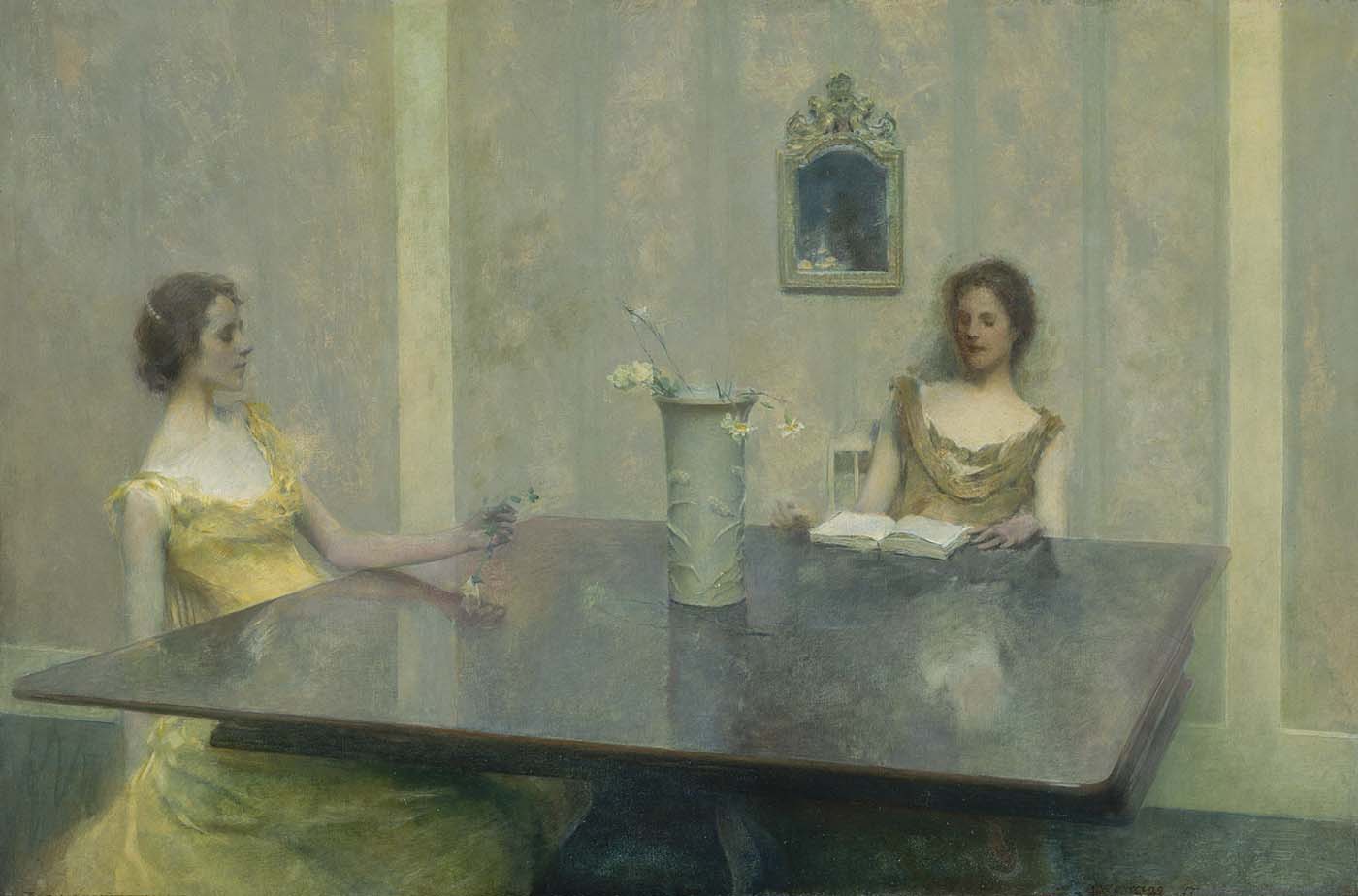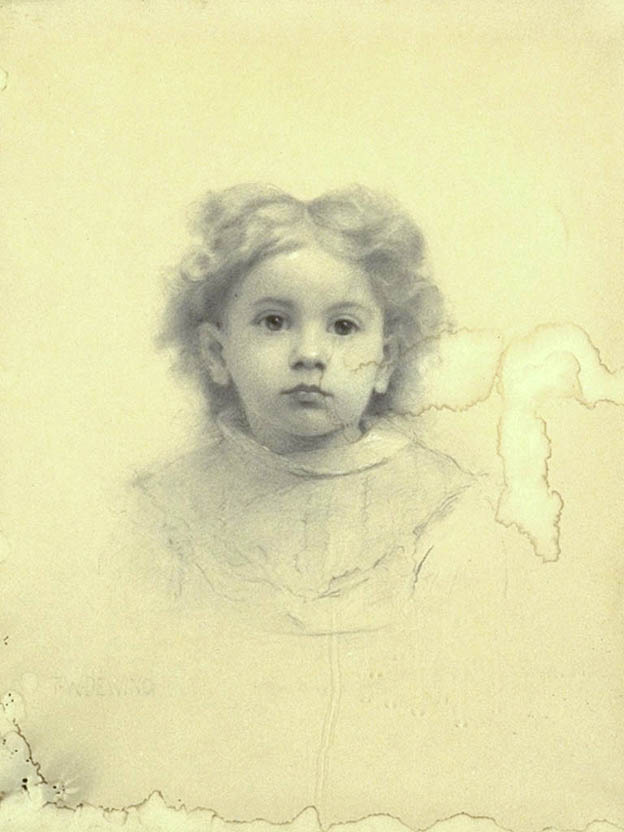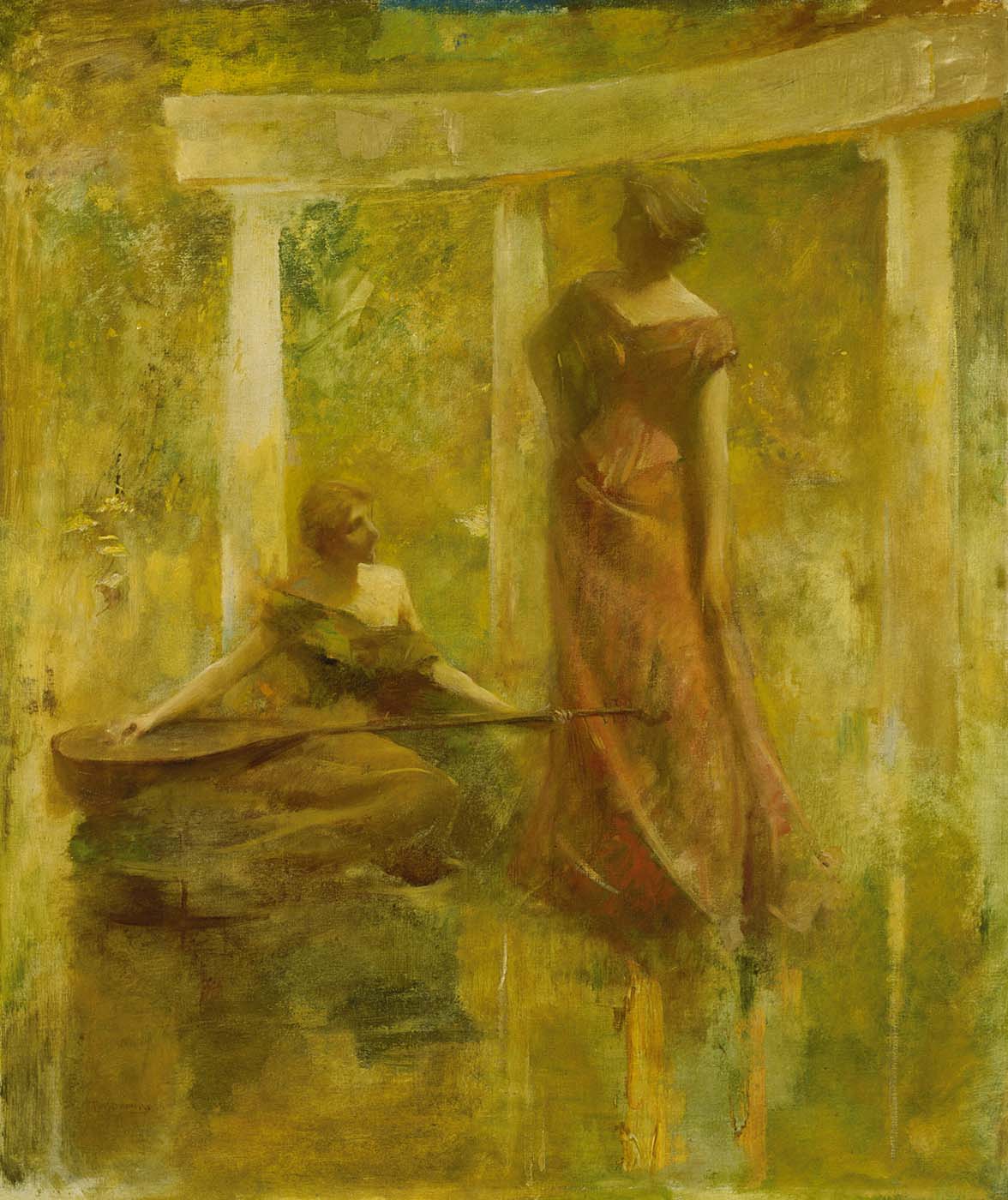Thomas Wilmer Dewing
The timeless nature of Dewing's landscapes stands in sharp contrast to the ever-increasing pace of modern life in New England. Verdant, mysterious, and peopled with attractive, classically dressed women, Dewing's paintings provided fixed points of truth and beauty for a turn-of-the-century generation fearing the great changes in American culture wrought by immigration, industrialization, and urbanization. Dewing's father worked in a paper mill, suffered financial ruin, and died an alcoholic, yet he descended from one of the first families of seventeenth-century New England. Despite modest circumstances, Dewing studied at the Lowell Institute in the native Boston and traveled to Paris, where he enrolled at the Académie Julian in 1876. Returning to Boston, he taught at the newly opened Museum School at the Museum of Fine Arts before moving, like so many writers and artists of his generation, to New York City. Living in New York, Dewing sought refuge from the vicissitudes of his new environment by returning annually, from 1885 to 1905, to the artists's colony at Cornish, New Hampshire. In Cornish, he perfected the misty, dream-like aesthetic that he used to depict a beautiful past.
William H. Truettner and Roger B. Stein, editors, with contributions by Dona Brown, Thomas Andrew Denenberg, Judith K. Maxwell, Stephen Nissenbaum, Bruce Robertson, Roger B. Stein, and William H. Truettner Picturing Old New England: Image and Memory (Washington, D.C.; New Haven, Conn; and London: National Museum of American Art with Yale University Press, 1999
Selected Images of Thomas Wilmer Dewing
Objects at Crystal Bridges Museum of American Art (1)
Objects at Princeton University Art Museum (1)
Objects at Archives of American Art (2)

